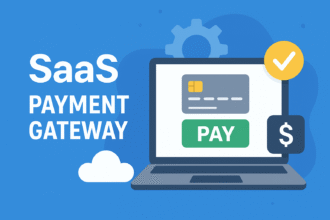Steps to Follow for Successful Mobile App Development
The mobile app industry has observed significant shifts influenced by technological advancements and evolving feature sets.
With the majority of consumers accessing information, products, and services on their smartphones and tablets, having a well-designed and functional mobile app can significantly enhance a company’s reach, engagement, and revenue. From improving customer experience to streamlining operations, mobile apps offer a plethora of benefits that can move businesses toward success in the competitive marketplace.
Irrespective of the industries in which the business operates, the only effective strategy to stay advanced and competitive is to develop a mobile app. Here, you can seek assistance from a reputable mobile app development company, as the competition is enormous.
In this blog, we will talk about the key steps to follow to build a user-friendly and intuitive mobile app that stands out.
Key Steps for Mobile Application Development

For businesses, mobile applications have been changing the game, driving innovation and new sources of income, and increasing client engagement. Below is the process to be followed for the mobile app development. You can hire mobile app developers or consider developing the application on your own.
Define Project Objective
Any individual needs to define the goals behind mobile app development. Begin by identifying the app’s purpose, essential features required, target audience, and expected results.
Furthermore, execute thorough research to understand user preferences, requirements, and paint points. Setting up app development objectives will act as a clear outline to stay aligned with the needs of both businesses and their end users.
Pick the Ideal Mobile App Development Approach
There are many approaches, such as native, cross-platform, and hybrid, for mobile app development. Each approach comes with varying benefits and limitations.
For example, Cross-platform and hybrid development include the use of frameworks like Flutter and React Native to enable reusing coding across different platforms. Thus minimizing the overall time and cost of the development. On the other hand, Native app development ensures apps deliver superior performance but does not support code reusability. Hence, separate app development for both iOS and Android platforms is required.
Hence, understanding your core needs and choosing the one that aligns with your needs, affordability, and timeline is necessary.
Create Wireframes and Design
The following vital aspect of developing mobile apps is design. It’s the right design that can keep the app user engaged, but complex app navigation can result in the opposite impression of the user.
So, the next step is to create wireframes and the app’s UI/UX. Wireframes offer a quick visual presentation of the application’s layout, functioning, and flow. This enables you to continuously refine the design as per the feedback before entering the development stage. Besides, ensure the mobile app is intuitive, user-friendly, and visually appealing. Thus enhancing the app’s usability and increasing user engagement.
Develop and Perform Testing
Now, it’s the time to develop your mobile app. Segment the development process into multiple tasks and integrate features as per the requirement and the complexity. You can follow an agile development approach to build and test apps, allowing for continuous improvements.
Test the application or different devices and platforms to find and fix any bugs and ensure compatibility.
Implement Robust Security Measures
You can not neglect security when developing a digital solution, be it an app or website. Mobile apps save user’s sensitive information and personal data. So, to safeguard it, implementing proper safety measures is essential. It will save the data from unauthorized access, cyber fraud, or breaches.
Besides, you need to adhere to security standards as well. It is to ensure the app developed meets the regulatory requirements and keeps up with the user’s trust.
Support and Maintenance
Undoubtedly, the mobile app development process does not end with the development step. To ensure it keeps functioning optimally, continuous support and maintenance is required.
The post-deployment step involves monitoring user feedback and making necessary modifications accordingly. Moreover, assessing the app for optimal performance is vital.
For example, analyze the performance metrics like load time, traffic, app’s response time, and more. It will help find any bugs or errors and fix them. All this together will ensure your mobile app continues to satisfy the user needs and ensure achieving a competitive edge.
Conclusion
To sum up, technological advancements and everyday evolving user expectations are raising competition in the mobile app market. Following all these steps thoroughly will help simplify the overall mobile app development process. You can create robust and innovative mobile apps that deliver value to both businesses and users.
But remember, it is possible when you have a clear app development objective, choose the right mobile app development company for expert assistance, and prioritize superior performance.
Hope you find this blog informative and helpful!

















